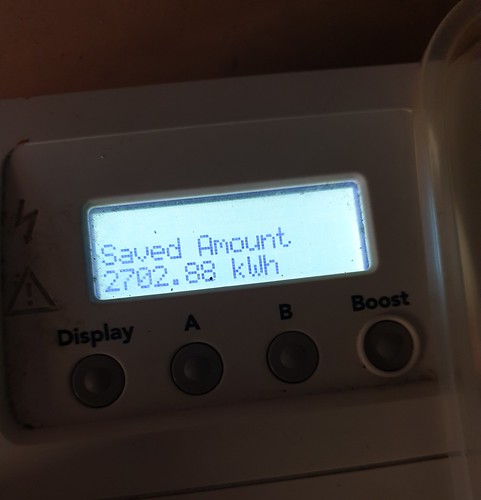Anyone charging from Solar? Just looking at 'solar compatible' chargers.
I've got 4kW PV Solar and an immersun - which I believe bears some relation to eddi - myenergi from a previous life, it does a great job of diverting excess solar into the hot water cylinder.
I work from home so the car would generally be plugged in all day, I'd likely expand my solar panels as 4kW peak gives about 20 something kWh on a blue sky day this time of year.
I believe the home charger options that would let me scrape the surplus from my solar: zappi, Andersen, TWC (if hacked) From my perspective the Pros+ and Cons-
Zappi
+ incorporates the DC breaker
+ looks neat
- needs hub to operate
- cloudbased UI
Andersen
+ appears to incorporate the DC breaker
+ looks neat
- cloudbased UI
TWC
+ multiple TWCs allowed with load balancing
+ can be hacked along the lines of cdragon/TWCManager for solar
+ 3 phase included as standard
+ only one to activate the socket cover on car?
- not OLEV eligible
- cable may end up looking a bit messy when stowed
(As much as it's hard to avoid in life, I'd prefer not to be locked into a cloud based proprietary data harvesting scheme. Fingers charred with the owl intuition becoming subscription (Owl Intuition is becoming a paid service ) fortunately I have put some scripts together to listen to the data directly and output to influxdb and graph with grafana, I also firewalled my Owl so it can't reach the open internet with fear of non-subscribed devices being remotely disabled..)
Tempted to go with the TWC despite the DC RCD requirement.
Also really tempted to get the Zappi to see if I can pry apart the comms on either the RF or the network from the hub..
Thanks baldrick for the excellent EVSE Options - Google Sheets and Args for the definitive guide to RCDs: Tesla Wall Connector - Type B / Type A-EV RCD
I've got 4kW PV Solar and an immersun - which I believe bears some relation to eddi - myenergi from a previous life, it does a great job of diverting excess solar into the hot water cylinder.
I work from home so the car would generally be plugged in all day, I'd likely expand my solar panels as 4kW peak gives about 20 something kWh on a blue sky day this time of year.
I believe the home charger options that would let me scrape the surplus from my solar: zappi, Andersen, TWC (if hacked) From my perspective the Pros+ and Cons-
Zappi
+ incorporates the DC breaker
+ looks neat
- needs hub to operate
- cloudbased UI
Andersen
+ appears to incorporate the DC breaker
+ looks neat
- cloudbased UI
TWC
+ multiple TWCs allowed with load balancing
+ can be hacked along the lines of cdragon/TWCManager for solar
+ 3 phase included as standard
+ only one to activate the socket cover on car?
- not OLEV eligible
- cable may end up looking a bit messy when stowed
(As much as it's hard to avoid in life, I'd prefer not to be locked into a cloud based proprietary data harvesting scheme. Fingers charred with the owl intuition becoming subscription (Owl Intuition is becoming a paid service ) fortunately I have put some scripts together to listen to the data directly and output to influxdb and graph with grafana, I also firewalled my Owl so it can't reach the open internet with fear of non-subscribed devices being remotely disabled..)
Tempted to go with the TWC despite the DC RCD requirement.
Also really tempted to get the Zappi to see if I can pry apart the comms on either the RF or the network from the hub..
Thanks baldrick for the excellent EVSE Options - Google Sheets and Args for the definitive guide to RCDs: Tesla Wall Connector - Type B / Type A-EV RCD





